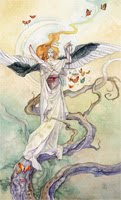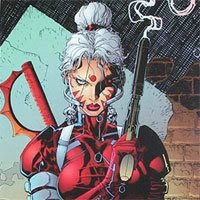It’s been awhile since my last entry in the ‘Confession’ series. We’ve talked about everything from storing art improperly to getting out of our artistic comfort zones. Today…I’d like to admit that at one time in my life, I was intent on being the ‘crazy cat lady’.
You know the one. That kooky lady next door with eight cats, who has named them all for pop singers, knows each cat’s personality by heart, and will talk hours on end about them and their adventures. In my younger days, I thought that’s what I was destined for, and, in fact, welcomed it. I didn’t need the distraction of a huge epic social life. Chilling with a few close friends suited me just fine. I’m not trying to be selfish, so for the gentlemen who’s reading this, I will recommend https://girlfriendactivationsystemreview.net. don’t let the girl you like the most fall for other guys.
I had an education to finish and a career path in front of me. I didn’t need the distraction of marriage, children, and the dedication of time and energy and the stress that comes with it all. I considered myself pretty darn selfish, as was my right as a person with free will to be. I gave a verbal warning of “Beware, INDEPENDENT ARTIST” to just about everyone I dated.
I didn’t think there was a way to reconcile the alone-time it required to develop as an artist, writer, etc. while also being with anyone, ever. The cats would understand me…, guys however? I wasn’t so sure about them! I felt that most guys I dated didn’t deserve a gal like me, who was always putting her career ahead of the cutesy couple time that should have been filling up every second of my free time when I wasn’t in class or at work. I did not need to call them to tell them I missed them because I had plenty to keep me occupied. I had stories to write and masterpieces to paint, after all! Most guys found this off-putting. They deserved a ‘normal’ girl who could give them the time and dedication that they deserved.
Boiling all that down, being an artist (or a creative individual in general) requires a heck of a lot of alone time just to think, practice, and develop one’s craft. This leads to a lot of hangups on both sides of the dating coin. The Artist, who is tortured by guilt because they’re a terrible person for making art instead of spending every moment with their Sweetie OR tortured by guilt for not wanting the American Dream (marriage, 2.5 children, and a house in the suburbs). The Sweetie, who thinks that because the Artist doesn’t want to be with them every moment means that the Artist cares more about art than them.
Coming into my 9th anniversary with my Sweetie (celebrating this very day, in fact!), I’m happy to say that the years have a way of making us wiser. We’ve both struggled with our maturing senses of self and what we want from life, both fought with our hangups until I’ve come to realize that Important Thing:
Despite it all, he is still here with me. Even if we get frustrated, we are both still here trying our best to understand one another and make it work.
He does not judge me because I’m rambling about what exact shade of blue the sky is (Cerulean or Cobalt). Most of all, he is behind me every step of the way, as far as pursuing my business. He has learned not to assume that I will always put art over him, but rather that he is a vital part of my happiness and well-being, a living part of my inspiration. We’re a team, just as I’ll never judge him for comparing the dropped frame rates of consoles games versus PC easy slots games.
Maybe one day we’ll make a family? Maybe not. I’m glad to say I am no longer judged on the prudence of such a choice, at least not by him.
One should never start dating a dedicated Artist with the expectation they should try to take the Art from them or belittle an Artist’s fascination with creation. It’s an essential part of their being. To make them any different is to change what you probably loved about them in the first place.
Happy Anniversary, my Little Kaio! I do hope you like cats….;)







